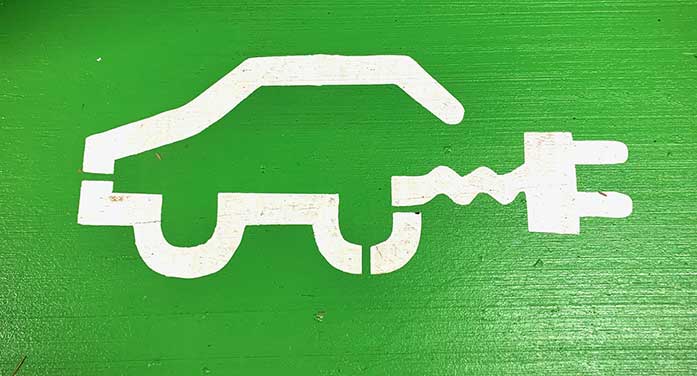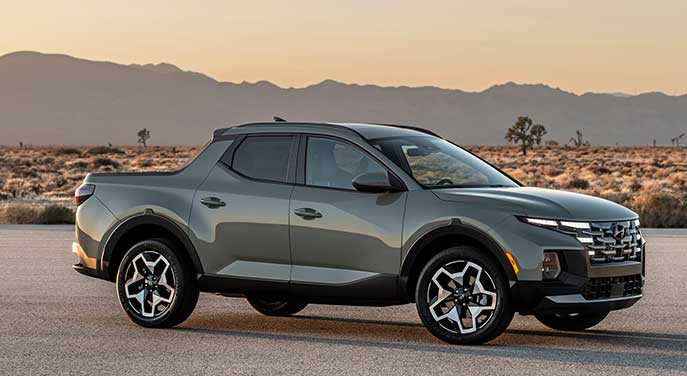 They say that imitation is the sincerest form of flattery. If that’s the case, Korean car manufacturers have been extraordinarily complimentary to their Japanese counterparts since the early 1980s at least.
They say that imitation is the sincerest form of flattery. If that’s the case, Korean car manufacturers have been extraordinarily complimentary to their Japanese counterparts since the early 1980s at least.
Ever since the Hyundai Pony, the Koreans have employed a fairly simple principle: make automobiles driveable and easy on the pocketbook. It’s a modus operandi employed successfully by the Japanese and, before them, the British.
Cars like the Honda Civic, Toyota Corolla and so on are what got the Japanese rolling in North America, and Hyundai/Kia have paid close attention, adopting this formula with great success.
And that brings us to the Hyundai Santa Cruz, an intriguing pickup/SUV hybrid that probably owes its existence to the Honda Ridgeline or maybe the Subaru Baja.
Manufactured in Alabama, the Santa Cruz is debuting for the 2022 model year and is built on the Tucson platform. Available in three trim levels, it’s powered by a 2.5-litre turbocharged four-cylinder engine that features continuously variable valve timing and is mated to an eight-speed dual clutch transmission, with all-wheel drive. This combination delivers a combined fuel economy rating of 10.6 litres/100 km.
Let’s get the transmission out of the way right off the top. In a nutshell, it needs work. It seems to have trouble deciding which gear to choose, and for low-speed manoeuvering – parking, for example – it’s indecisive and slow to respond. Particularly when it comes to backing up, which it doesn’t seem to like, there’s a distinct dead spot when you shift into reverse and it caught me by surprise every time. You put it into gear and, instead of moving back, it seems to go briefly into neutral and do nothing, or even coast away. It’s not the end of the world but it is annoying.
| RELATED CONTENT | |
 |
|
| Ford’s Maverick brings hybrid tech to compact pickup trucks By Ted Laturnus |
|
| 2022 Ford Maverick Hybrid has plenty going for it – if you can find one By Ted Laturnus |
|
| Lexus RX 450h offers comfort in a hybrid package By Ted Laturnus |
|
|
The Santa Cruz will accommodate five adults and has a cute little pickup bed that’s big enough to carry bits and pieces, but definitely not to be taken seriously if you’re looking for major haulage. Like the Subaru Baja, it’s handy but not heavy-duty.
When Honda introduced the Ridgeline in 2006, it claimed it could accommodate a full-size motorcycle, which was true if you put it in diagonally and left the tailgate down. The Santa Fe won’t do that.
But that’s fine because the Santa Cruz is being marketed as a “Sport Adventure Vehicle,” aimed at weekend warriors who need something to haul all their bits and pieces when they hit the great outdoors. It has trailer pre-wiring as standard equipment and can pull up to 5,000 pounds (2,267 kg) with trailer brakes fitted and 1,650 pounds without.
Behind the wheel, the Santa Cruz feels much like a Tucson/Santa Fe. Engine noise under throttle is a little pronounced but, otherwise, it feels well screwed together, with minimal wind/highway noise. This is one of Hyundai’s secrets to success: make the vehicle as driveable as possible, with straightforward switchgear and simple ergonomics.
The standard equipment level is typically high – the Ultimate model I test drove had heated/ventilated front seats, heated steering wheel, 10-inch monitor, second-row seat heat/ventilation, 20-inch wheels and tires, and full leather interior. The base model comes with stuff like steering wheel paddle shifters, pickup bed tonneau, remote start, heated steering wheel, and so on. It also has the usual safety features like lane-keeping assist, rear cross-traffic alert, blind-spot assist, etc.
Like virtually every Hyundai/Kia product I’ve ever driven, the Santa Cruz does nothing to alienate the driver. While not groundbreaking in design or layout, it’s still immensely driveable (as long as you don’t back up) and steers a straight line down the middle of the market.
It’s probably closer to the Ridgeline (although considerably smaller) than the Baja in terms of driveability and usability. But it’s worth noting that the Ridgeline is still with us and going strong, where the Baja lasted just four years.
2022 Hyundai Santa Cruz
Engine: 2.5-litre turbocharged four-cylinder
Transmission: eight-speed automatic
Drive: all-wheel
Horsepower: 281 at 5,800 rpm
Torque: 311 foot pounds at 1,700 to 4,000 rpm
Price range: $38,499 to $44,799
Fuel economy (litres/100 km): 12.1 city, 8.6 highway, with regular gas
Some alternatives: Honda Ridgeline, Ford Maverick, Toyota Tacoma, Chevrolet Colorado, Nissan Frontier
Ted Laturnus has been an automotive journalist since 1976. He was named Canadian Automobile Journalist of the Year twice and is past president of the Automobile Journalists Association of Canada (AJAC). For interview requests, click here.
The opinions expressed by our columnists and contributors are theirs alone and do not inherently or expressly reflect the views of our publication.
© Troy Media
Troy Media is an editorial content provider to media outlets and its own hosted community news outlets across Canada.



